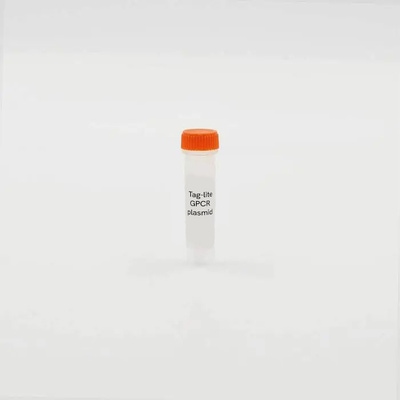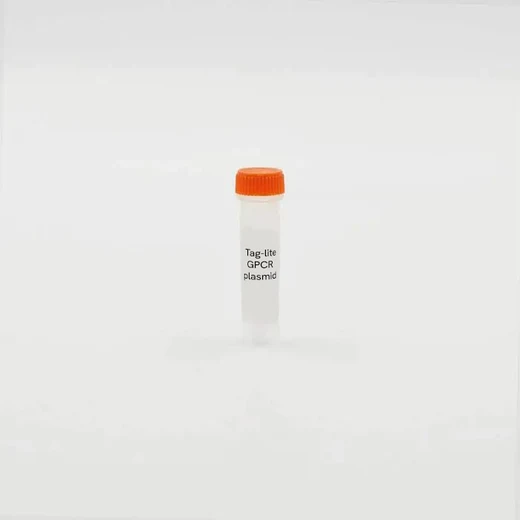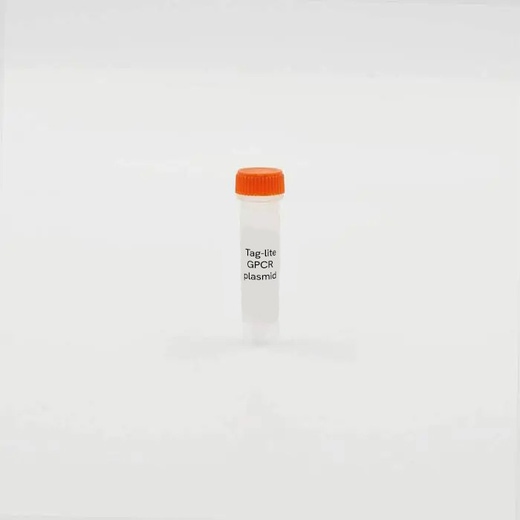

Tag-lite pSNAP-GIP Receptor Plasmid, 10 µg








| Feature | Specification |
|---|---|
| Application | Receptor-Ligand Binding |









Loading...
Product information
Overview
Over past few years, SNAP-Tag technology combined with TR-FRET has paved way development of many non-radioactive, no-wash, binding assays. method is based on transfecting cells using plasmids encoding a SNAP-Tag and subsequently labeling m with Terbium. Revvity offers a large collection of such plasmids. All GPCR genes are cloned in an expression vector directly downstream from a CMV promoter, and are provided ready protein expression and labeling.
All information on this page pertains to Tag-lite plasmid cloned with GIPR Glucagon receptor.
How it works
Step 1 - Plasmid transfection
Use standard transfection techniques (refer to transient transfection protocol) to transiently express the SNAP-GPCR of interest in your cell line.
Step 2 - Receptor labeling
SNAP-tag® is a small fusion tag that covalently interacts with specific substrates. It allows specific and covalent labeling of any protein of interest (refer to labeling procedure). Cells are provided unlabeled and need to be labeled with Lumi4-Terbium prior to running a binding assay. Labeling reagents are available from the Revvity catalog in 4 different sizes.

Step 3 - Understand the assay principle
Running a receptor binding assay using Tag-lite is as easy as it can get. Simply dispense 10 µL of labeled cells into each well, followed by 5 µL of labeled ligand and 5 µL of the compound you wish to test. Like all HTRF assays, Tag-lite assays do not require any washing steps. A diagram of the procedure to be followed is given on the right.

Step 4- Saturation binding (KD)
A saturation binding assay measures total and non-specific binding for increasing concentrations of ligand under equilibrium conditions. To perform the assay, the fluorescent ligand is titrated into a solution containing a fixed amount of labeled cells and then incubated to equilibrium. The HTRF ratio obtained from this titration is the total binding.


Step 5 - Competitive binding (KI)
A competitive binding assay is performed to measure the dissociation constant, Ki. To perform the assay, the compound is titrated into a solution containing a fixed concentration of fluorescent ligand and a fixed amount of cells.


Specifications
| Application |
Receptor-Ligand Binding
|
|---|---|
| Brand |
Tag-lite
|
| Detection Modality |
HTRF
|
| Product Group |
Plasmids
|
| Shipping Conditions |
Shipped in Dry Ice
|
| Target Class |
GPCR
|
| Technology |
TR-FRET
|
| Therapeutic Area |
Cardiovascular
Infectious Diseases
Metabolism/Diabetes
NASH/Fibrosis
Neuroscience
Oncology & Inflammation
Rare Diseases
|
| Unit Size |
1 each
|
Video gallery
Resources
Are you looking for resources, click on the resource type to explore further.
G-protein coupled receptors (GPCRs) are crucial transmembrane proteins involved in cellular signal transduction.
This technical...
This guide provides you an overview of HTRF applications in several therapeutic areas.


How can we help you?
We are here to answer your questions.






























